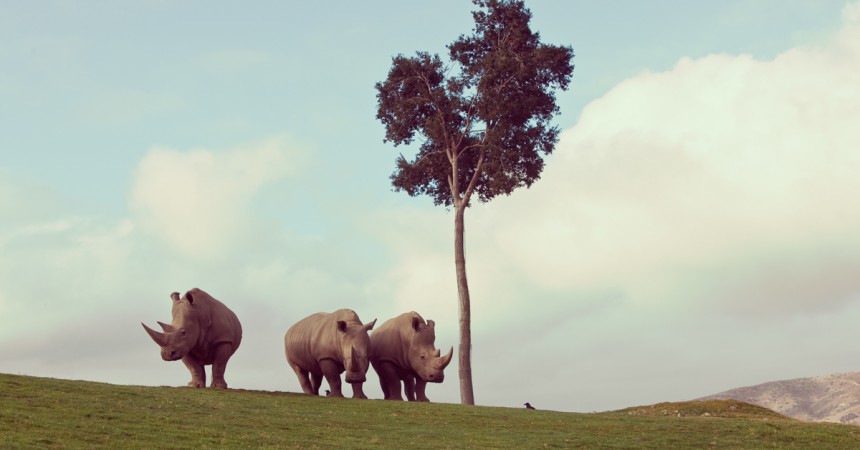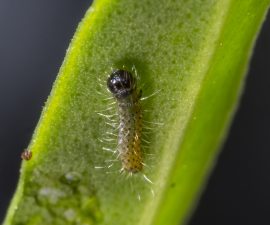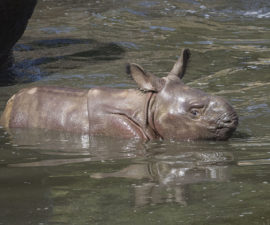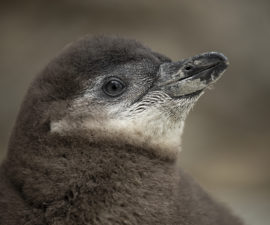It’s estimated that a rhino is poached every 8 hours. At this rate, rhinos could become extinct in 15 years.

In total, there are less than 30,000 rhinos remaining on Earth.

A group of rhinos is sometimes called a “crash.”

Rhinos may look indestructible, but their skin is actually quite sensitive, especially to sunburn and biting insects.

All rhinos are herbivores.

Rhino gestation lasts 15 to 16 months. The only animal with a longer pregnancy is the elephant.

Newborn calves are able to stand on their feet and start to nurse two to three hours after birth.

Because rhinos are very nearsighted, they often charge when startled; in the wild, rhinos have been observed charging at boulders or trees.

The biggest threat to rhinos is humans; civil war in their native lands and poaching for their horns has decimated wild populations.

Rhino horn is made of keratin, the same material as our fingernails.

The demand for rhino horn has gone from subsistence hunting by locals to highly organized international crime rings.

In 2014, the toll from poaching was the worst yet: a horrifying 1,215 rhinos were killed in South Africa.

Close to 100 known rhino species have existed. Today, only five continue the line: two native to Africa (black and white) and three native to Asia (Greater one-horned, Javan and Sumatran).

The rhino’s ancestors walked the Earth 55 million years ago.

Black, white and Sumatran rhinos have two horns; Javan and greater one-horned rhinos have one.


Despite their name, black rhinos and white rhinos are the same color – brownish gray.

Black rhinos can reach speeds of up to 40 miles per hour (64 kilometers per hour).

Standing at up to 6 feet (1.8 meters) at the shoulder, white rhinos are the largest rhino species and the second largest land mammal.

White rhino males can be persistent, with courtship lasting 5 to 20 days.

There are only 3 northern white rhinos remaining on the planet.

The three Asian rhinos use enlarged incisors or tusks, rather than their horns, when fighting or defending territory.

All three Asian rhino species are excellent swimmers.

Sumatran rhinos are the smallest of the five rhino species and the only type covered with a coat of shaggy hair.

Through collaborative, science-based, multidisciplinary conservation efforts at the Safari Park, we have successfully added the births of 96 southern white rhinos, 70 greater one-horned rhinos, and 13 black rhinos to the worldwide population.
Lend a hand to save rhinos. Write “STOP KILLING RHINOS” on your hand and post your photo to Instagram or Twitter with the #Rally4Rhinos hashtag. Learn more HERE.

Jenn Beening is a communications specialist for San Diego Zoo Global. See her previous post, Best of Vine: Safari Park.





